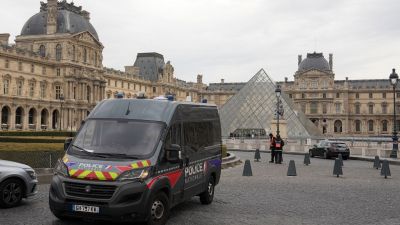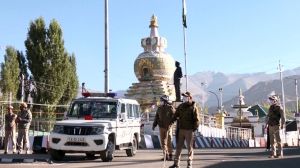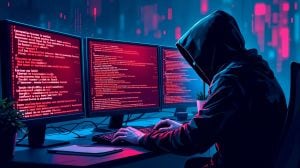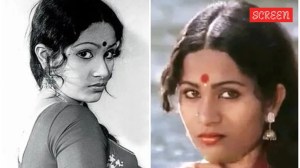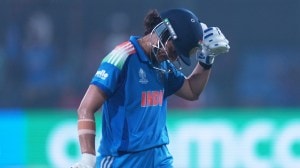PM Modi discusses Emergency in Mann ki Baat: Recalling India’s ‘darkest period’
Between 1975 and 1977, India saw the imposition of Emergency, a period in which civil liberties were suspended, the media was censored, political opponents were persecuted and numerous human rights violations were carried out. Here is a quick primer on it, with a timeline.
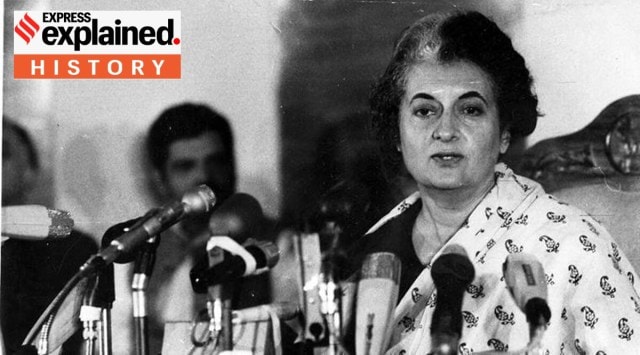 The Emergency saw the government, under Indira Gandhi, turn authoritarian. (Wikimedia Commons)
The Emergency saw the government, under Indira Gandhi, turn authoritarian. (Wikimedia Commons) On today’s (June 18) Mann ki Baat, Prime Minister Narendra Modi recalled the Emergency, calling it “a dark period” in India’s history.
“Lakhs of people opposed the Emergency with full might. Supporters of democracy were tortured so much during that time, that even today, it makes the mind tremble,” he said during the 102nd episode of Mann Ki Baat.
The Emergency was a 21-month long period, between 1975 and 1977, when civil liberties were suspended, the press was censored, Indira Gandhi’s political opponents were persecuted, and numerous human rights violations were carried out – a period when India ceased to function as a democracy.
Looking back, the period changed the political and social landscape in the country forever.
We provide a brief account on the Emergency: why it was declared, what happened, and its legacy.
Why was it declared?
“The President has proclaimed the Emergency. This is nothing to panic about. I am sure you are all aware of the deep and widespread conspiracy, which has been brewing ever since I began to introduce certain progressive measures of benefit for the common man and woman in India.”
With these words, broadcasted to the country on June 26, 1975 on the All India Radio, Prime Minister Indira Gandhi ushered in the Emergency.
Even before the declaration of Emergency, Indira had faced allegations of trying to impose total control during her stint as Congress party president, and subsequently, as Prime Minister.
Her authoritarian leanings were aided by her charismatic appeal, particularly among the middle class and the economically downtrodden, many of whom saw her as a saviour. Thus, the Emergency was Indira’s strongest attempt to shut out every democratic voice and tighten her grip on power.
The proclamation came shortly after the Raj Narain verdict, in which the Allahabad High Court found Indira guilty of electoral malpractices, invalidated her election from Rae Bareilly and barred her from holding elected office for six years. The prevailing politico-economic situation – including the recently concluded war with Pakistan, the 1973 oil crisis, a drought, and strikes and protests across the country – provided a perfect situation for Gandhi to justify the imposition of the Emergency.
What happened during the Emergency?
The Emergency allowed Gandhi to arrest political opponents on a large scale. Thousands of leaders and protestors were put under preventive detention. These included figures such as Jayaprakash Narayan, Vijayaraje Scindia, Mulayam Singh Yadav, Raj Narain, Morarji Desai, Charan Singh, JB Kripalani, George Fernandes, Atal Bihari Vajpayee, Lal Krishna Advani, Arun Jaitley, Gayatri Devi and Jyoti Basu. Those who escaped arrest went underground.
This period also saw the government exercise complete control over the media. Pre-censorship – meaning that newspapers and other publications had to submit their content to government authorities for approval before publication – was instituted. An elaborate censorship apparatus was created which controlled all flow of information. Lastly, opposition voices were silenced while government propaganda flooded the country.
Among various human rights violations were forced sterilisation campaigns and slum clearance programs carried out under the leadership of Indira Gandhi’s son, Sanjay. Most importantly, during this period, Indira Gandhi ruled by dictat, with proper constitutional processes halted.
However, with authoritarianism came resistance. Media outlets such as The Indian Express expressed their discontent with blank editorials or smartly worded obituaries. Many leaders courted imprisonment, taking strength from Gandhian methods that had ousted the British from India, less than three decades prior.
A timeline
January 1966: Indira Gandhi elected prime minister.
November 1969: The Congress splits after Gandhi is expelled for violating party discipline.
1973-75: Surge in political unrest and demonstrations against the Indira Gandhi-led government.
1971: Political opponent Raj Narain lodges complaint of electoral fraud against Indira Gandhi.
June 12, 1975: Allahabad High Court finds Gandhi guilty over discrepancies in the electoral campaign.
June 24, 1975: Supreme Court rules that MP privileges to no longer apply to Gandhi. She is barred from voting. However, she is allowed to continue as Prime Minister.
June 25, 1975: Declaration of Emergency by president Fakhruddin Ali Ahmed on the advice of Indira Gandhi.
June 26, 1975: Indira Gandhi addresses the nation on All India Radio.
September 1976: Sanjay Gandhi initiates mass forced sterilisation program in Delhi.
January 18, 1977: Indira Gandhi calls for fresh elections and releases all political prisoners.
March 23, 1977: Emergency officially comes to an end.
What is the legacy of the Emergency?
The Emergency was lifted in 1977, amidst rising internal discontent and international criticism. This was followed by general elections, held in March 1977, which would change India’s political landscape forever. The Congress party, which had been in power since Independence, suffered a humiliating defeat.
The newly formed Janata Party, a coalition of disparate opposition parties, emerged victorious and formed the government with Morarji Desai as the prime minister. While this government did not last long, with Congress returning to power in 1980, it would mark the beginning of the end for the previously all-powerful Congress. Over the next few decades, the Congress would be in and out of power, until 2014, when it was defeated by the BJP.
The Emergency was also followed by the rise of judicial activism in India. While major Emergency provisions were almost immediately repealed, the period acted as a warning, pointing to the fragility of Indian democracy.





- 01
- 02
- 03
- 04
- 05


